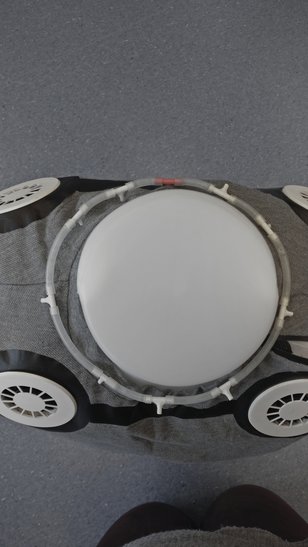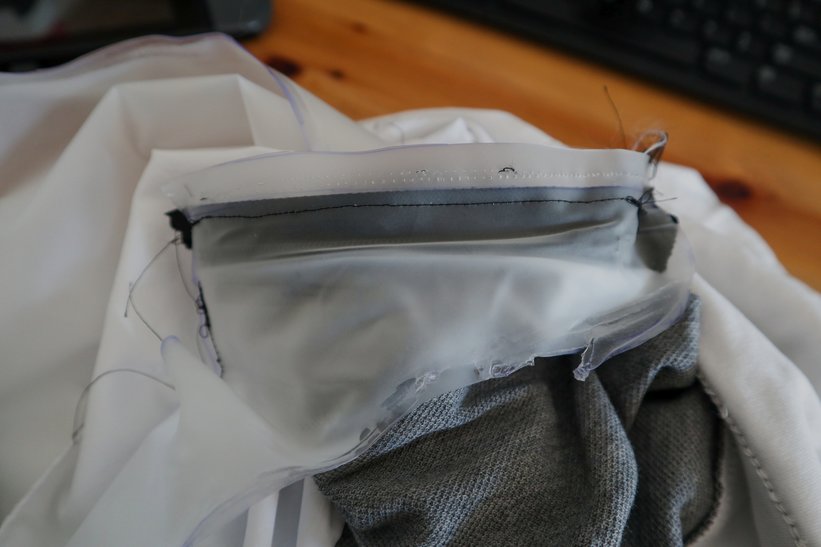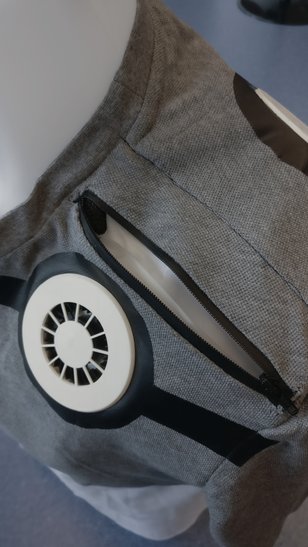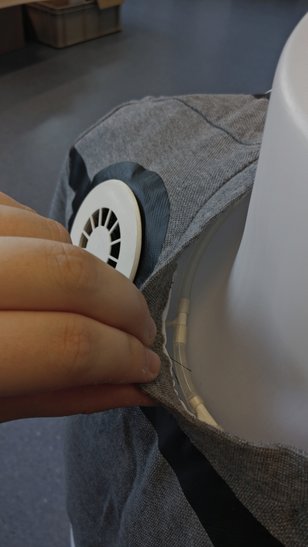Hybrid cooling solution for tetraplegics
Persons with a spinal cord injury are not able to control the temperature in (part of) their upper body. Moreover, they do not sense when their body is overheating and cannot sweat to cool down. Tetra- (and para-) plegics therefore have a much higher risk of heat stroke like injuries than able-bodied persons during hot weather conditions and intensive sporting. In this project a hybrid cooling shirt is developed which comprises four small ventilators and a water sprayer.




The prototype was tested on an able-bodied person with a shirt equipped with four ventilators and the watering system only attached to one side of the body. The temperature was measured at two locations on the chest and two at the back. Figure 4 shows that after 30 minutes cooling the skin temperature for the fan-cooled body side dropped between 1 to 4 degrees whereas the combination of water spraying and ventilation resulted in a skin temperature drop of 9 to 10 degrees. It can thus be concluded that the hybrid cooling was much more effective than the cooling with fans only.

Kaspar Jansen
- +31 (0) 152786905
- k.m.b.jansen@tudelft.nl
-
Room B-3-170
Project team
Graduate student
- Elsemiek Aten
Supervision
- Kaspar Jansen (chair)
- Margreet Beets (mentor)
- Lennart Teunissen (expert)
- Linda Plaude (Textile design)







